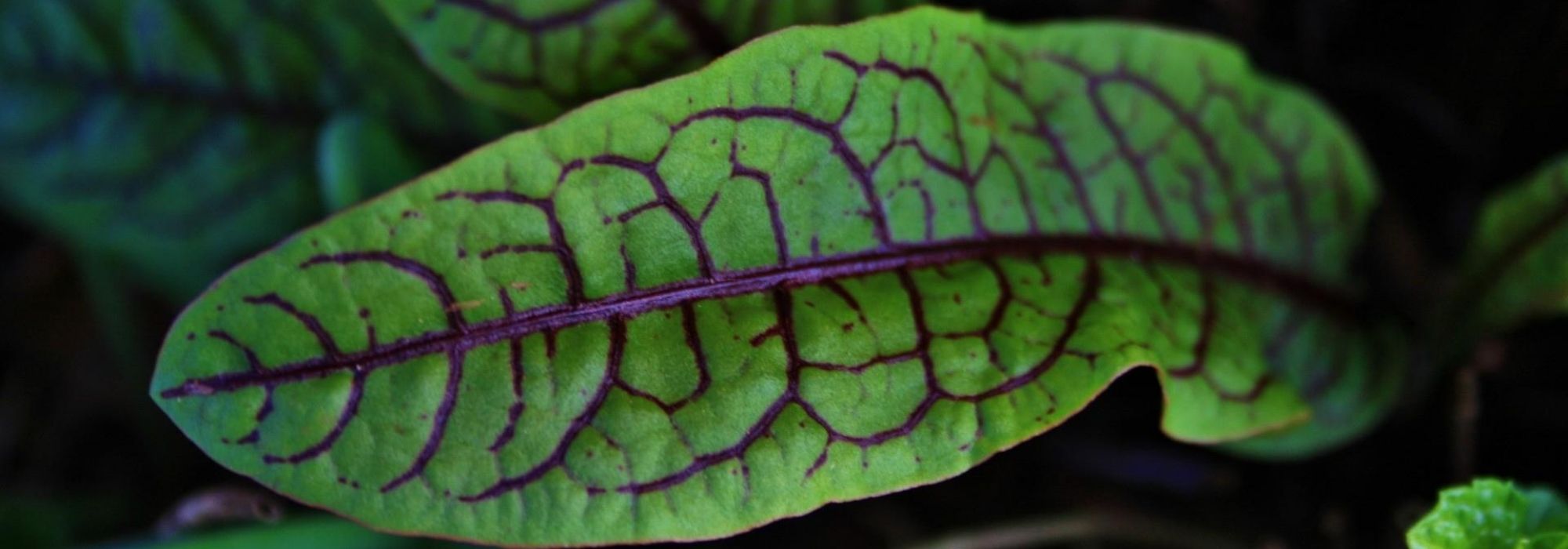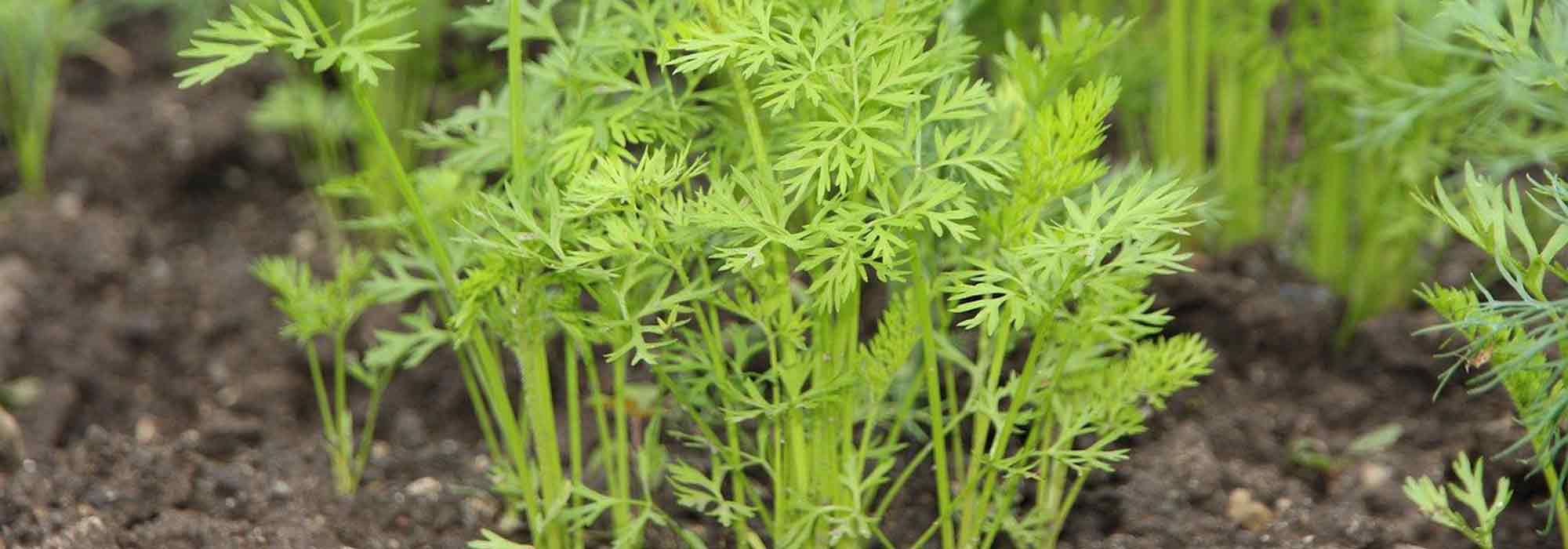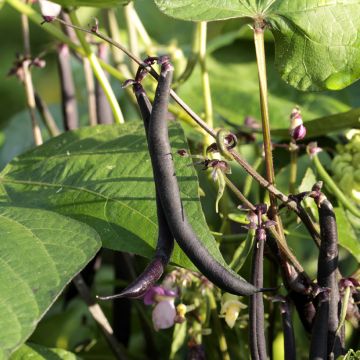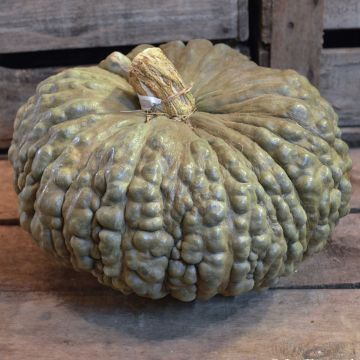

Oseille bronze - Rumex flexuosus Copper Sword
Rumex flexuosus Copper Sword
Rumex flexuosus Copper Sword
Special offer!
Receive a €20 voucher for any order over €90 (excluding delivery costs, credit notes, and plastic-free options)!
1- Add your favorite plants to your cart.
2- Once you have reached €90, confirm your order (you can even choose the delivery date!).
3- As soon as your order is shipped, you will receive an email containing your voucher code, valid for 3 months (90 days).
Your voucher is unique and can only be used once, for any order with a minimum value of €20, excluding delivery costs.
Can be combined with other current offers, non-divisible and non-refundable.
Why not try an alternative variety in stock?
View all →This plant carries a 6 months recovery warranty
More information
We guarantee the quality of our plants for a full growing cycle, and will replace at our expense any plant that fails to recover under normal climatic and planting conditions.
Description
The Rumex flexuosus Copper Sword is an unusual variety of New Zealand sorrel, commonly known as Bronze Sorrel. This perennial plant forms a clump of about 40 cm (16in) composed of long leaves beautifully colored with copper bronze arranged in a somewhat disorderly manner. Very decorative, these leaves are also edible, like those of all sorrels grown in our vegetable gardens. Hardy and perennial, it is cultivated as a vegetable plant but also for balcony and garden ornamentation, or even in a wet rockery. In the kitchen, raw or cooked leaves will add a tangy note to your dishes. Plant it in spring or autumn and harvest as needed from March to October.
Bronze Sorrel is native to New Zealand and is hardy to approximately -15°C (5°F) (USDA zone 7). This plant belongs to the family Polygonaceae and naturally thrives in cool, humus-rich, and slightly acidic soil. In the sun, its foliage will be more colorful, but the soil should remain slightly moist at all times. Its long lanceolate leaves are bordered with rounded teeth and display beautiful brown to copper bronze hues. The plant flowers in June-July, with branched bronze-red floral stems adorned with tiny brown flowers. The slightly sour, slightly acidic flavor of the leaves is appreciated in cooking, and they can be prepared like spinach. They accompany meats and fish (especially salmon), soups, or omelettes. Cook the leaves in a stainless steel container because of their acidity. Its young and tender leaves are consumed raw in salads.
Bronze Sorrel can be grown in open ground or in a pot. Hardy, it remains in place for several years.
In ornamental gardens: Rumex Copper Sword pairs beautifully with yellow blooms: consider, for example, combining it with ligularia or Lysimachia nummularia.
Harvesting: Pick as needed, either when young or mature, from spring to frost. Harvest leaf by leaf, by hand or with a knife. If you want to extend the harvest into winter, protect the plants with tunnels or frames. Sorrel is a perennial plant that can remain in place for several years.
Storage: Sorrel leaves should be consumed immediately after harvest, as they do not keep well. However, they freeze very well after cooking.
Gardener's tip: To limit watering, we recommend mulching the soil with thin successive layers of clippings, if possible mixed with dead leaves. This protection, which keeps the soil moist, also reduces weeding.
Harvest
Plant habit
Foliage
Other Sorrels
View all →Planting and care
Copper Sword Sorrel appreciates consistently slightly moist, rich, and loose soils. It prefers neutral or acidic soils. Install it in partial shade or in the sun, avoiding direct sunlight. Planting is done in spring (from March to May) or in autumn (September-October).
In open ground : If necessary, add compost a few months before planting by scratching the soil 5 cm (2in) deep after loosening it. Space the plants 25 cm (10in) apart. Dig a hole (3 times the volume of the root ball), place the root ball, and cover with fine soil. Firmly press down and water to keep the soil moist.
Regularly weed and hoe, especially at the beginning of cultivation. Water in case of high temperatures. If your plants are eaten by slugs or snails, place ashes or coffee grounds nearby, to be renewed in case of rain. In early spring, apply compost on the surface.
In a pot: Place a layer of gravel at the bottom of the pot to facilitate drainage. Fill it with a mixture of potting soil and compost. Place the root ball, cover with soil, and firm it down.
Water regularly. Plan to repot every year.
Cut the flower stalks to promote foliage development.
Sorrel can be propagated by dividing clumps in March-April. This operation is recommended every 3 to 4 years. Transplant it to another location in the garden to favor rotations and limit the risks of diseases or pests.
Cultivation
Care
Intended location
Planting & care advice
This item has not been reviewed yet - be the first to leave a review about it.
Similar products
Haven't found what you were looking for?
Hardiness is the lowest winter temperature a plant can endure without suffering serious damage or even dying. However, hardiness is affected by location (a sheltered area, such as a patio), protection (winter cover) and soil type (hardiness is improved by well-drained soil).

Photo Sharing Terms & Conditions
In order to encourage gardeners to interact and share their experiences, Promesse de fleurs offers various media enabling content to be uploaded onto its Site - in particular via the ‘Photo sharing’ module.
The User agrees to refrain from:
- Posting any content that is illegal, prejudicial, insulting, racist, inciteful to hatred, revisionist, contrary to public decency, that infringes on privacy or on the privacy rights of third parties, in particular the publicity rights of persons and goods, intellectual property rights, or the right to privacy.
- Submitting content on behalf of a third party;
- Impersonate the identity of a third party and/or publish any personal information about a third party;
In general, the User undertakes to refrain from any unethical behaviour.
All Content (in particular text, comments, files, images, photos, videos, creative works, etc.), which may be subject to property or intellectual property rights, image or other private rights, shall remain the property of the User, subject to the limited rights granted by the terms of the licence granted by Promesse de fleurs as stated below. Users are at liberty to publish or not to publish such Content on the Site, notably via the ‘Photo Sharing’ facility, and accept that this Content shall be made public and freely accessible, notably on the Internet.
Users further acknowledge, undertake to have ,and guarantee that they hold all necessary rights and permissions to publish such material on the Site, in particular with regard to the legislation in force pertaining to any privacy, property, intellectual property, image, or contractual rights, or rights of any other nature. By publishing such Content on the Site, Users acknowledge accepting full liability as publishers of the Content within the meaning of the law, and grant Promesse de fleurs, free of charge, an inclusive, worldwide licence for the said Content for the entire duration of its publication, including all reproduction, representation, up/downloading, displaying, performing, transmission, and storage rights.
Users also grant permission for their name to be linked to the Content and accept that this link may not always be made available.
By engaging in posting material, Users consent to their Content becoming automatically accessible on the Internet, in particular on other sites and/or blogs and/or web pages of the Promesse de fleurs site, including in particular social pages and the Promesse de fleurs catalogue.
Users may secure the removal of entrusted content free of charge by issuing a simple request via our contact form.
The flowering period indicated on our website applies to countries and regions located in USDA zone 8 (France, the United Kingdom, Ireland, the Netherlands, etc.)
It will vary according to where you live:
- In zones 9 to 10 (Italy, Spain, Greece, etc.), flowering will occur about 2 to 4 weeks earlier.
- In zones 6 to 7 (Germany, Poland, Slovenia, and lower mountainous regions), flowering will be delayed by 2 to 3 weeks.
- In zone 5 (Central Europe, Scandinavia), blooming will be delayed by 3 to 5 weeks.
In temperate climates, pruning of spring-flowering shrubs (forsythia, spireas, etc.) should be done just after flowering.
Pruning of summer-flowering shrubs (Indian Lilac, Perovskia, etc.) can be done in winter or spring.
In cold regions as well as with frost-sensitive plants, avoid pruning too early when severe frosts may still occur.
The planting period indicated on our website applies to countries and regions located in USDA zone 8 (France, United Kingdom, Ireland, Netherlands).
It will vary according to where you live:
- In Mediterranean zones (Marseille, Madrid, Milan, etc.), autumn and winter are the best planting periods.
- In continental zones (Strasbourg, Munich, Vienna, etc.), delay planting by 2 to 3 weeks in spring and bring it forward by 2 to 4 weeks in autumn.
- In mountainous regions (the Alps, Pyrenees, Carpathians, etc.), it is best to plant in late spring (May-June) or late summer (August-September).
The harvesting period indicated on our website applies to countries and regions in USDA zone 8 (France, England, Ireland, the Netherlands).
In colder areas (Scandinavia, Poland, Austria...) fruit and vegetable harvests are likely to be delayed by 3-4 weeks.
In warmer areas (Italy, Spain, Greece, etc.), harvesting will probably take place earlier, depending on weather conditions.
The sowing periods indicated on our website apply to countries and regions within USDA Zone 8 (France, UK, Ireland, Netherlands).
In colder areas (Scandinavia, Poland, Austria...), delay any outdoor sowing by 3-4 weeks, or sow under glass.
In warmer climes (Italy, Spain, Greece, etc.), bring outdoor sowing forward by a few weeks.





























































